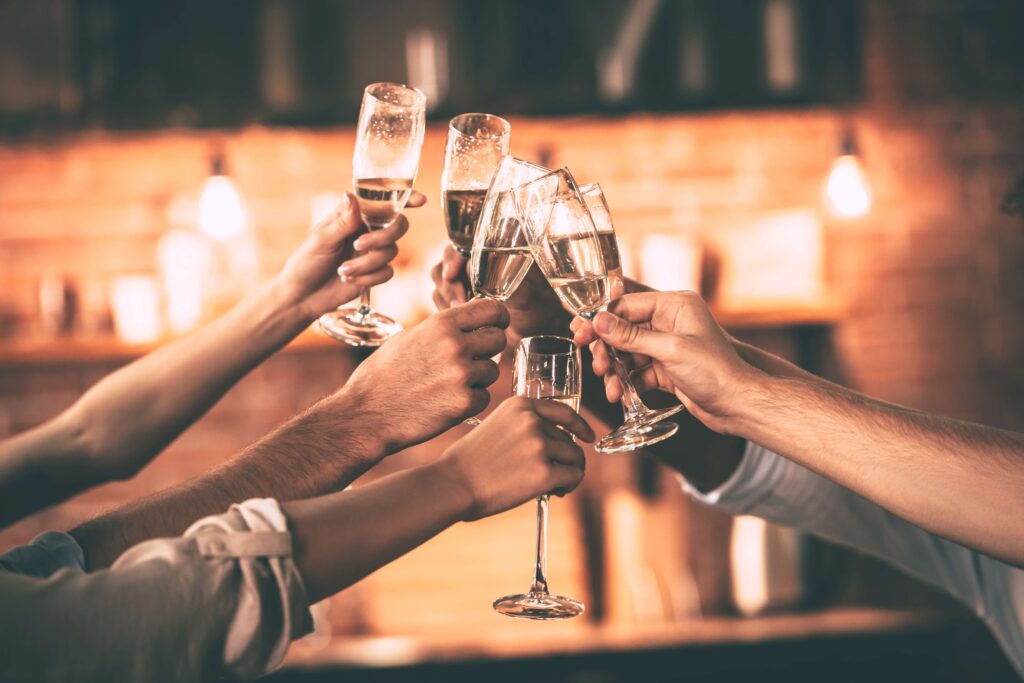A good bottle of Champagne is like liquid gold, which is why it is so drinkable. There’s nothing quite like a perfectly chilled glass of bubbly as it is affectionately known. Champagne is not only a drink for celebrations; it can be enjoyed any time but does have a certain ‘je ne sais quoi’, which makes it such a special drink.
There’s a richness to champagne; the colour, tradition, smell, taste, and history all go into giving it a certain prestige. Champagne is well known for going to peoples heads, which is why people so often wonder about the alcohol content of the sparkling wine.
The alcohol content of Champagne is not any more than your average bottle of wine, which contains between 11% alcohol by volume (ABV) and 14% ABV unless it is considered low-alcohol wine, which can be as little as 5%. A bottle of Champagne will usually contain around 12% ABV.
How are the bubbles in Champagne made?
Champagne is predominantly produced using Chardonnay or Pinot Noir and Pinot Meunier, which are grown in the Champagne region of France. This is a single appellation d’origine contrôlée which is a certification granted to certain French agricultural products, such as wine and cheese, to denote their place of origin, quality, and style. This makes it extra special.
As grapes ripen, they develop a greater sugar content. Once picked, the fermentation process takes place, and that then converts the sugar into alcohol. The longer this process takes place, the greater the alcohol content. Champagne has a second fermentation process which happens within the bottle (méthode champenoise), and this is when the all important sparkle is created.
The trapped CO2 carbonates the wine as the yeast cells die off, and the now sparkling wine spends 15 months ‘on the lees’ while the complexity of the wine develops.
The wine is rotated to increase the clarification, which is known as ‘riddling’ and helps the dead yeast cells to gather at the neck of the bottle of Champagne. The yeast is then removed, and the wine is topped off with a dosage of sugar and wine, corked or seeled.
All Champagne is sparkling wine, but not all sparkling wine is Champagne.
There is much speculation and uncertainty around why sparkling wine makes you feel tipsy quicker. Tests and trials have been carried out, but there is nothing conclusive. It is considered to be because of the bubbles which allegedly help the alcohol pass more quickly into the bloodstream.
What is the difference between champagne and prosecco and cava?
Cava is from Spain and is also fermented in the bottle like Champagne. The difference is that Cava is made with a blend of macabeu, xarel·lo, and parellad grapes.
Prosecco, which has become very popular in recent years, is Italy’s sparkling wine made completely different from Champagne and Cava. Prosecco is made from Prosecco or Glera grapes and is fermented in tanks, a process known as Charmat.
The process it takes to produce Champagne, history, and quality give this liquid gold its deserved reputation.
Champagne is one of the great pleasures in life. If you’re interested in starting a Champagne collection or learning more about which Champagnes are worth investing in, download our Collectors Guide and start building your Champagne collection today.







